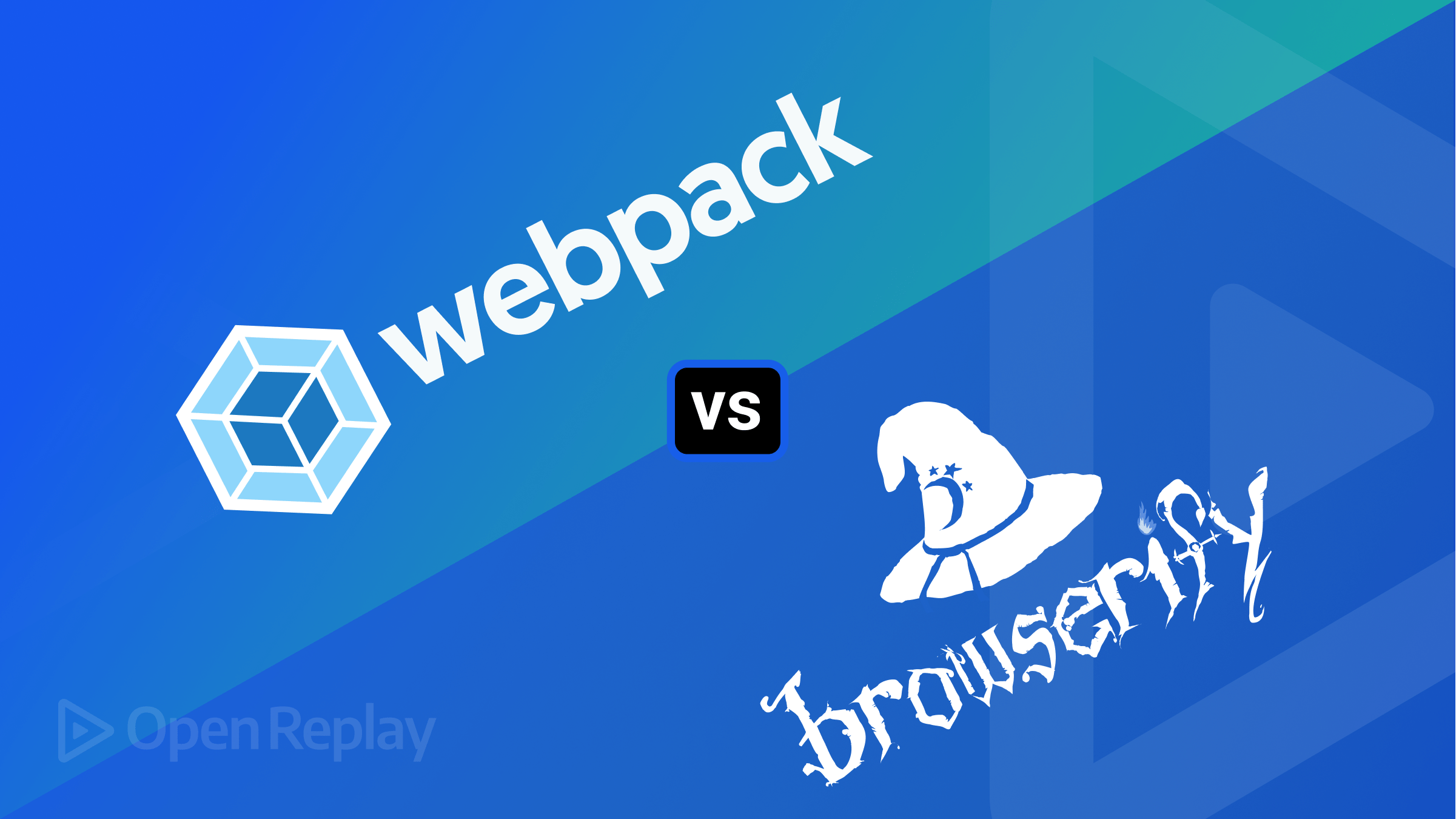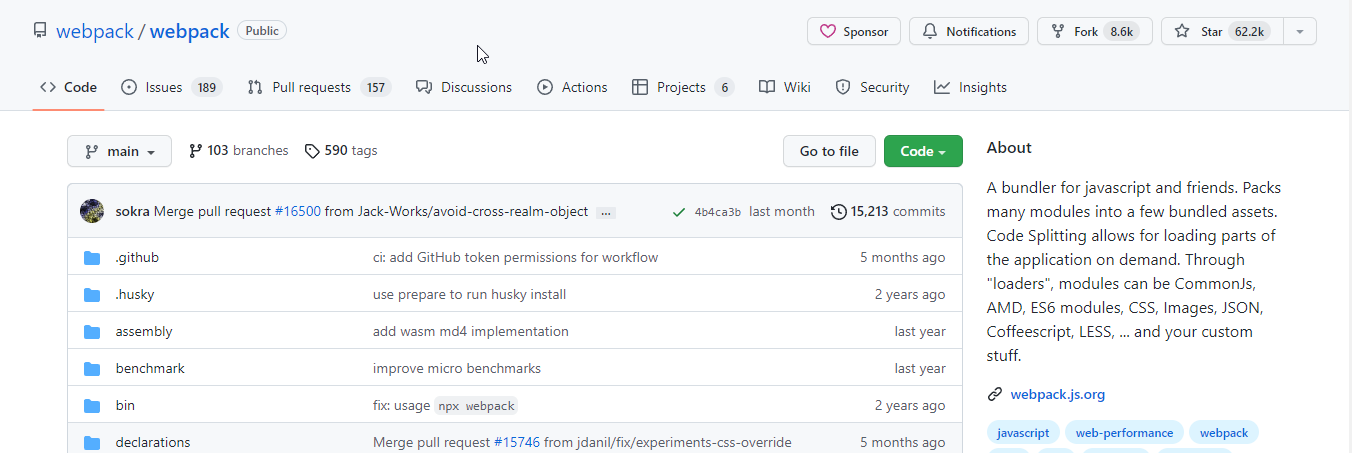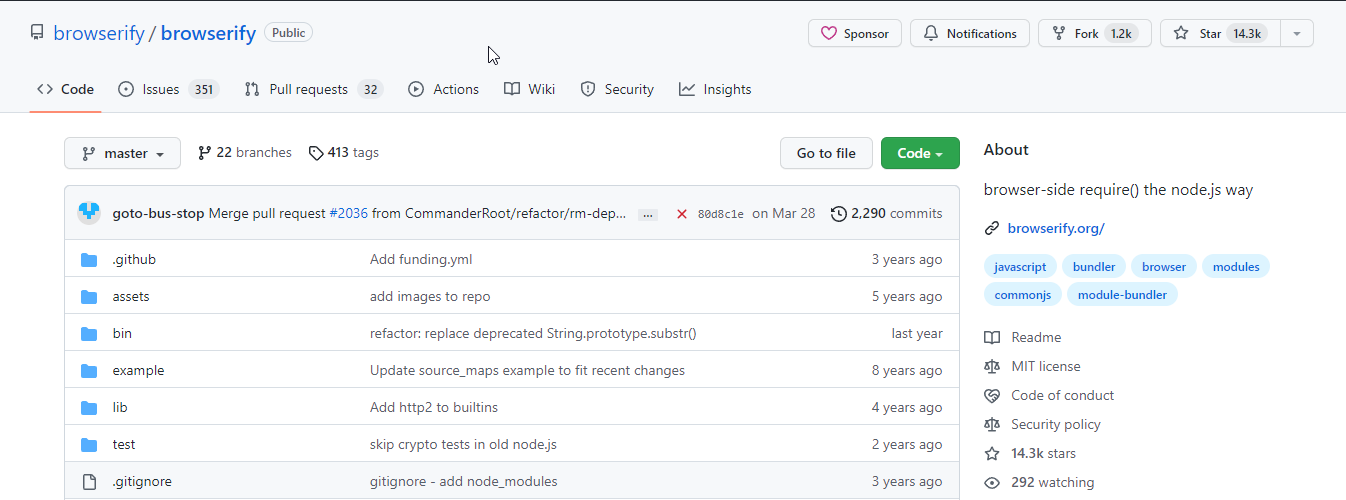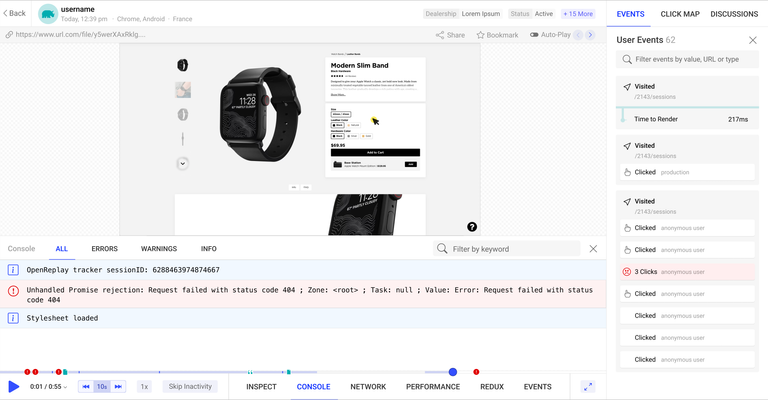Browserify vs Webpack -- A Comparison
 Prateek Singh
Prateek Singh
Developers can create and use Node.js-style modules that compile for usage in browsers using the free and open-source JavaScript bundler tool known as Browserify.
A free and open-source module bundler for JavaScript is called Webpack. It is designed primarily for JavaScript, but if the appropriate loaders are present, it may also transform front-end components, including HTML, CSS, and pictures. When given dependencies-containing modules, Webpack creates static assets to represent those modules.

A Javascript bundler for buddies, it combines several assets into a number of modules. Code splitting makes it possible to load application components as needed. CommonJs, AMD, ES6 modules, CSS, Images, JSON, Coffeescript, LESS, and your items can all be loaded through “loaders” as well. A tool in a tech stack’s JS Build Tools/JS Task Runners category is called Webpack.
An open-source utility called Webpack has received 62.2K GitHub stars and 8.6K GitHub forks. Here is a link to the GitHub repository for Webpack’s open-source code.
Browserify lets you use the require('modules') in the browser by bundling up all your dependencies. It is a tool in the Front End Package Manager category of a tech stack.
Also, It is an open-source tool. Here’s a link to Browserify’s open-source repository on GitHub.

Let’s get started to understand the difference between Browerify and Webpack.
Head-to-Head Comparison Between Browersify and Webpack
Definition
The node code was executed in the browser using Browserify. It supports and provides numerous built-in shims for various node core modules.
Webpack processes the user code that must be managed in the target environment. It generates a single bundle of combined scripts or several bundles.
Features of Webpack
Bundles ES Modules, CommonJS, and AMD modules
can produce a runtime asynchronous load of a single bundle or several chunks (to reduce initial loading time)
The compilation process decreases the runtime size, which resolves dependencies.
The preprocessing of files by loaders can include converting TypeScript to JavaScript, Handlebars strings to built functions, Base64 encoding of pictures, etc.
Features of Browserify
To structure your browser code and load modules that npm has installed, use require() in the node style.
To create a bundle you can provide to the browser in a single script tag, browserify will recursively examine all the require() calls in your app.
Integrated Tools
Babel, jsdom, and Bunyan are some of the integrated tools that can be used in Browserify.
Font awesome, buddy, grid some, Gatsby are a few integrated tools for Webpack.
Classification
The primary factor taken into consideration by the developer is the browser code node style, and it falls within the category of front-end package management.
The primary deciding element is webpack, which is regarded as the most powerful bundler, and it is categorized as JS build tools and task runners.
Open Source Session Replay
OpenReplayis an open-source, session replay suite that lets you see what users do on your web app, helping you troubleshoot issues faster. OpenReplay is self-hosted for full control over your data.

Start enjoying your debugging experience -start using OpenReplay for free.
Key Points Between Browserify and Webpack
Let us discuss some of the major key differences between Browserify and Webpack:
Operation and Package
While the node utilizes the native read file function and Browserify is used to read the strings accessible in static files, Webpack uses a common object to overload the necessary function and applies a unique loader to load the files. Its names should follow a suitable pattern. Webpack manages all module formats out of the box and doesn’t favor any common JavaScript over any AMD.
Therefore, writing the entire project using AMD is simple, but a webpack is also required. As a result, it won’t run in Node without any changes. For various applications, Browserify offers various bundles.
Splitting of the Bundles
For dividing the bundles, the webpack provides certain built-in features. However, it is simple to use and has the same capabilities as Browserify, thanks to the partition and factor bundles. Like Browserify, Webpack includes amazing features like react hot loading, which refreshes the javascript on user web pages without refreshing the page.
It requires some practice to become user-friendly and is not simple to configure. There are two ways to make the code run in node.js using the webpack route. The user can enable the execution of the node.js code by exporting it as a target. To run Webpack inside the package, the improved module has to override the method in Node.js.
Static asset management
An overload CSS file that requires any input from the browser to be executed at runtime is required by Webpack. CSS files are not required by Node.js, although Webpack can be customized to meet specific needs. When it comes to conventions and modularity, Browserify has several problems. The package.json folders used in module packages are tracked by the tool parcelify, which is used in conjunction with Browserify.
Additionally, it needs the corresponding CSS files to be offered as JavaScript packages. It attempts to split the program into various modules with set-up package.json files. It executes the entire codebase and increases its modularity and reusability.
Configuration
A built-in, extremely explicit system is produced with the independent task made possible by Browserify. It supports a wide range of plugins, allowing for suitable customization. However, it is constrained in terms of wiring design and troubleshooting. Browserify supports Grunt and Gulp.
The webpack configuration is saved locally, while the Browserify configuration is done in a script.
Personalization makes it a significant webpack constraint, takes up a lot of composite space, and has just a basic understanding of application configuration.
Pros of Webpack
It is one of the most powerful bundlers
It can handle all types of asset
Easy configuration
Better support in Browser Dev-Tools
Pros of Browserify
Node-style Browser code
It is an open-source tool
It is easy to set up
NPM modules in the browser
Load modules installed by npm
Conclusion
Having too many JS files referenced in your HTML, being unable to use Node modules in the browser, and being unable to reference your modules in your code are all fixed with Browserify.
As a result, Browserify only requires a minimal configuration and only enforces certain principles. To operate for all the effort and make it a more straightforward scenario, Webpack only requires a few configurations.
Webpack has unquestionably shown that it is a crucial component of the JavaScript toolchain utilized by several projects. This essay merely scratches the surface of what is possible with Webpack’s flexibility and extensibility.
The next time you need to select a module bundler for your application, perhaps you’ll have a better grasp of some of Webpack’s fundamental ideas, the issue it addresses, and the procedures for configuring your configuration files.
Subscribe to my newsletter
Read articles from Prateek Singh directly inside your inbox. Subscribe to the newsletter, and don't miss out.
Written by

Prateek Singh
Prateek Singh
I began my career as a software developer after obtaining a degree in Computer Science from a Pune university. I quickly found that I had a passion for coding and problem-solving, and I have spent the last several years honing my skills in various programming languages and technologies. I have experience in developing web applications, mobile applications, and desktop applications, and I am always eager to learn more about emerging technologies. As I progressed in my career, I discovered another passion: writing. I began to explore content writing as a way to express myself creatively and share my knowledge with others. I found that I had a knack for explaining complex technical concepts in a way that was easy for others to understand, and I soon began writing articles and blog posts on topics related to software development. Today, I work as a freelance software developer and content writer, taking on projects that allow me to combine my technical expertise with my love of writing. I have worked on everything from developing custom software solutions for small businesses to creating engaging content for technology websites and blogs. I am dedicated to delivering high-quality work that meets the needs of my clients, and I am always looking for new and exciting projects to take on.